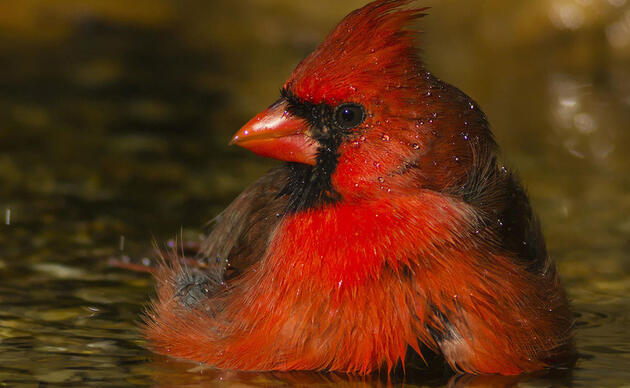Panthers, typically shy and nocturnal, are rarely seen and prefer to avoid people.
The video was shot on the morning of May 12 at 8:15 a.m. as the panther walked from the pine flatwood across a prairie and into the cypress forest. Corkscrew volunteers Dick Brewer and Phil Nye saw the cat ahead of them on the boardwalk, and Brewer shot the video. The panther continued on the boardwalk for almost a half mile before finally jumping off and disappearing.
"It was incredible to actually see one of those magnificent creatures in the wild,” Brewer said. “I only wish it had been walking toward us instead of away so we could have seen more of it."
Debbie Lotter, who works for Corkscrew’s education department, was also out for a morning walk and saw the rare feline. “When I saw the Panther, I was actually in the forest and the panther was coming in my direction,” Lotter said. “It did not seem the least bit interested in me. It was an awesome sight to see.”
Mark Lotz, a panther biologist with the Florida Fish and Wildlife Conservation Commission (FWC), looked at the video and concluded that the panther is a female. He also said the risk of harm to a person who encounters a panther is low. “Wild animals can be unpredictable and things can happen, but we have not had any issues in Florida,” Lotz said. “Generally speaking panthers are shy and secretive and prefer to move about when there are no people around. If someone moves toward a panther or makes an aggressive move, such as throwing something or making a loud noise, they normally get up and get out of the area.”
Seeing a Florida Panther is extremely rare and according to Lotz, Corkscrew is among the top three places in Florida that someone can see the cats, based on photos and videos FWC has received. Everglades National Park and Fakahatchee Strand are the other two parks where visitors have had the rare opportunity to see a Florida panther.
Critically endangered, less than 100 of these unique cats exist in Southwest Florida, according to the FWC. Its population is threatened primarily by loss, degradation, and fragmentation of its habitat as a result of urban expansion.
In addition to managing Corkscrew Swamp Sanctuary for the protection of important habitat, Audubon and its partners in Southwest Florida are working diligently to manage and direct urban growth in order to restore and protect wildlife, such as the Florida Panther, important natural areas, and clean freshwater resources.
“Audubon has been working with other landowners in Collier County to create the Florida Panther Protection Program,” said Eric Draper, Audubon of Florida Policy Director. “This will guarantee that the panthers roaming Corkscrew will be able to expand their range and population size.”
By B_Chumney
Stay in Touch!
Show your love of birds today. Subscribe to receive email updates about Audubon's conservation work and hear about opportunities to help birds in your area or nationwide.




